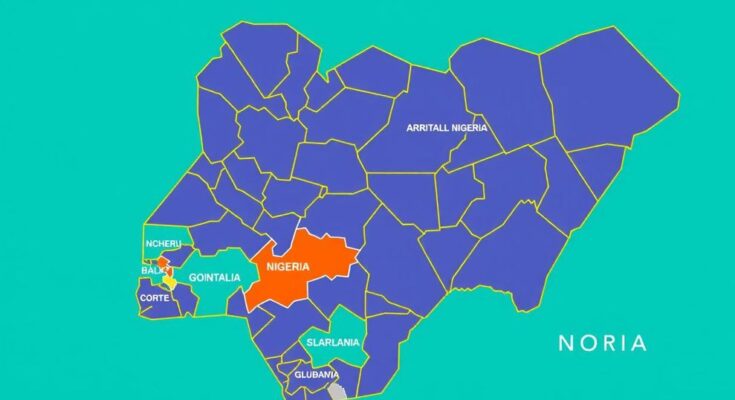The IOM report details the state of displacement in North-East Nigeria as of March 2025, highlighting 2,252,348 IDPs, a decrease of 0.1% from the previous round. It notes that despite better tracking, actual displacement numbers may be higher due to accessibility issues in certain areas. The report also records a rise in returnees, indicating a trend of individuals returning to their areas of origin.
The IOM Nigeria Displacement Tracking Matrix has published the North-East Nigeria Displacement Report 49, detailing assessments conducted from October to November 2024. This region, comprising Adamawa, Bauchi, Borno, Gombe, Taraba, and Yobe states, continues to be the most affected by conflict, with significant data reflecting current humanitarian challenges.
In Round 49, the assessment identified 2,252,348 internally displaced persons (IDPs) residing in 465,935 households. This figure indicates a marginal decrease of 0.1 percent, representing a decline of 3,247 individuals since Round 48, which reported 2,255,595 IDPs in September 2024. Over the preceding 12 months, the overall decrease in IDP numbers remained below one percent.
Despite these findings, certain Local Government Areas (LGAs) in Borno State, such as Kukawa, Kala/Balge, and Guzamala, have remained largely inaccessible to humanitarian efforts since escalation in hostilities began in October 2018. Consequently, it is likely that the actual number of displaced individuals is much higher given the continued challenges in reaching these areas.
During this assessment round, evaluations were conducted in 2,254 locations, including 259 camps and camp-like settlements, as well as 1,995 sites where IDPs reside amongst host communities. This comprehensive analysis aims to offer deeper insights into the displacement trends and dynamics in the conflict-affected region.
The assessment also reported 2,129,325 returnees, which reflects an increase of 18,848 individuals or more than one percent since Round 48 when 2,110,477 returnees were documented in September 2024. Despite a slight decrease in IDP numbers, there is a notable trend towards returning to original locations in the BAY states, indicating a positive shift in the humanitarian situation.
The North-East Nigeria Displacement Report 49 reveals a slight decline in the number of IDPs, signaling ongoing humanitarian concerns while simultaneously noting an increase in returnee figures. Despite obstacles in access to specific LGAs, trends in the BAY states show a gradual return to original homes. Overall, these assessments are crucial in shaping effective responses to the displacement crisis.
Original Source: reliefweb.int




